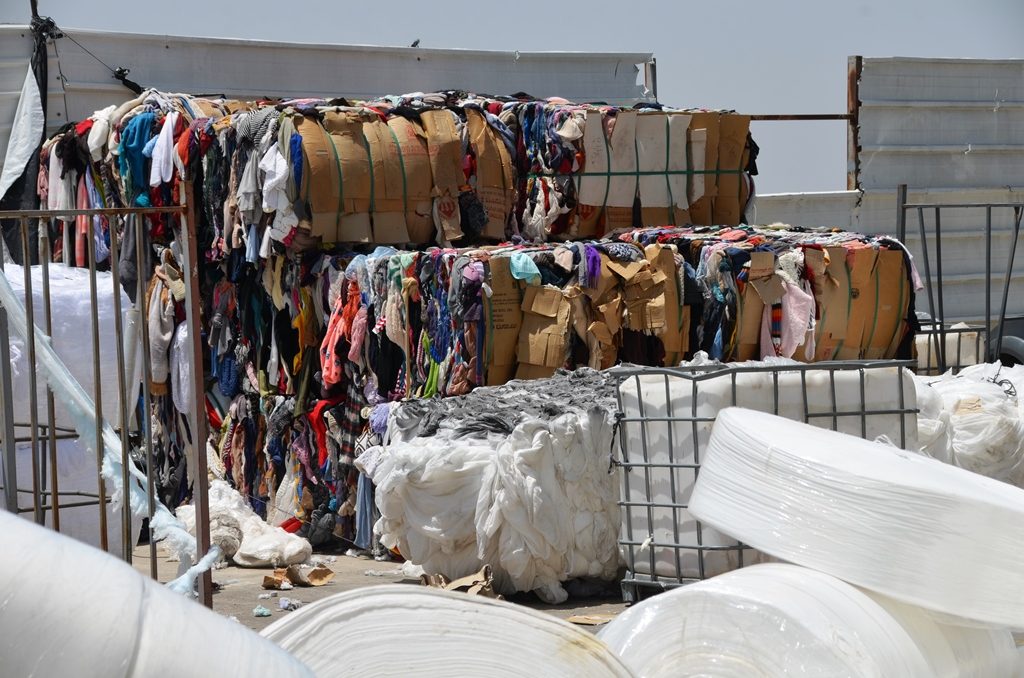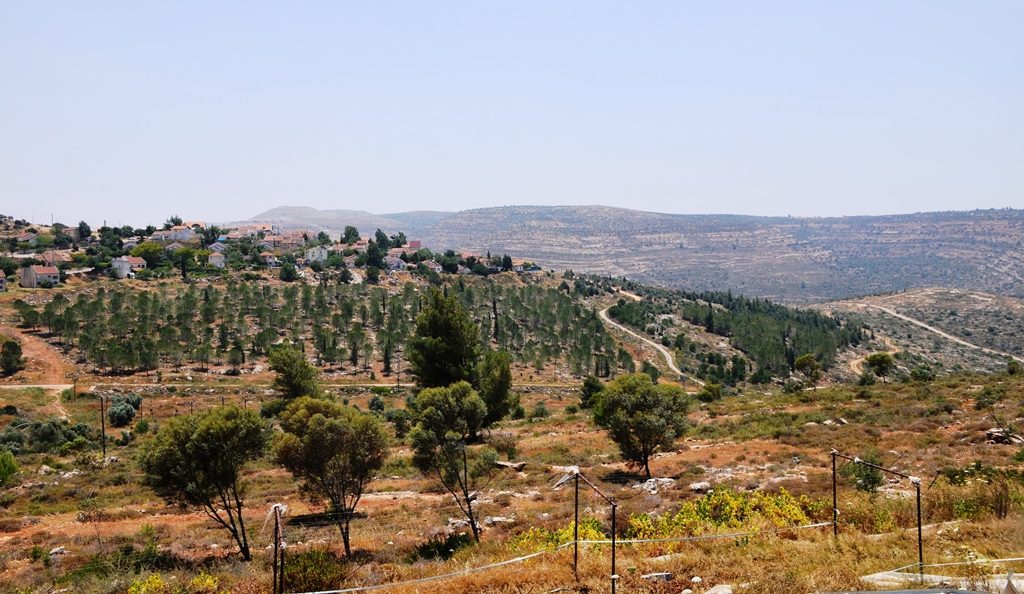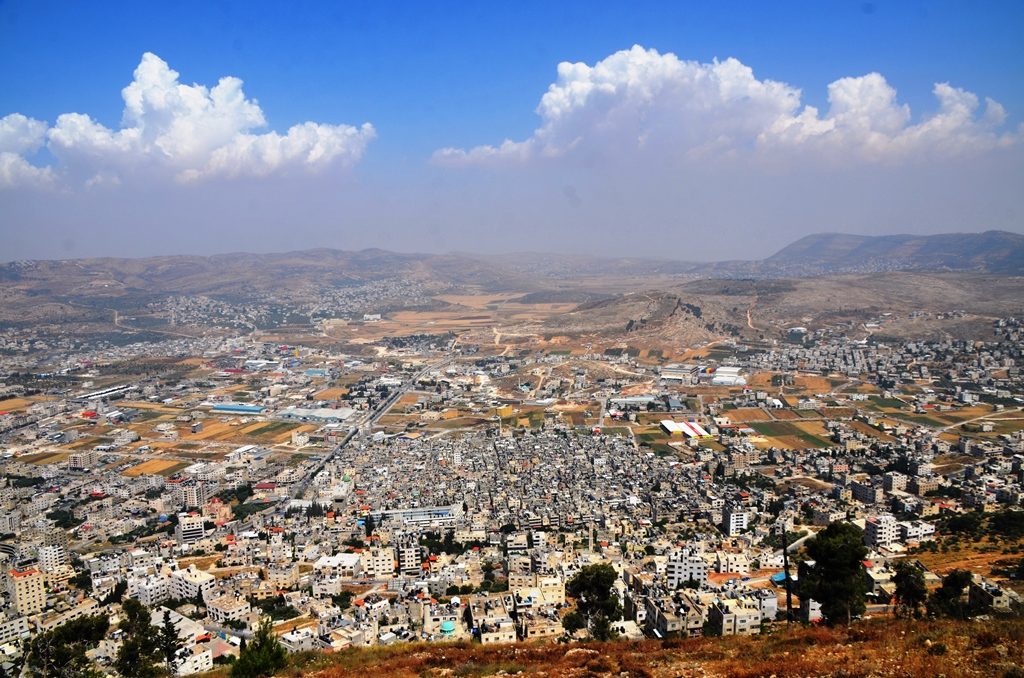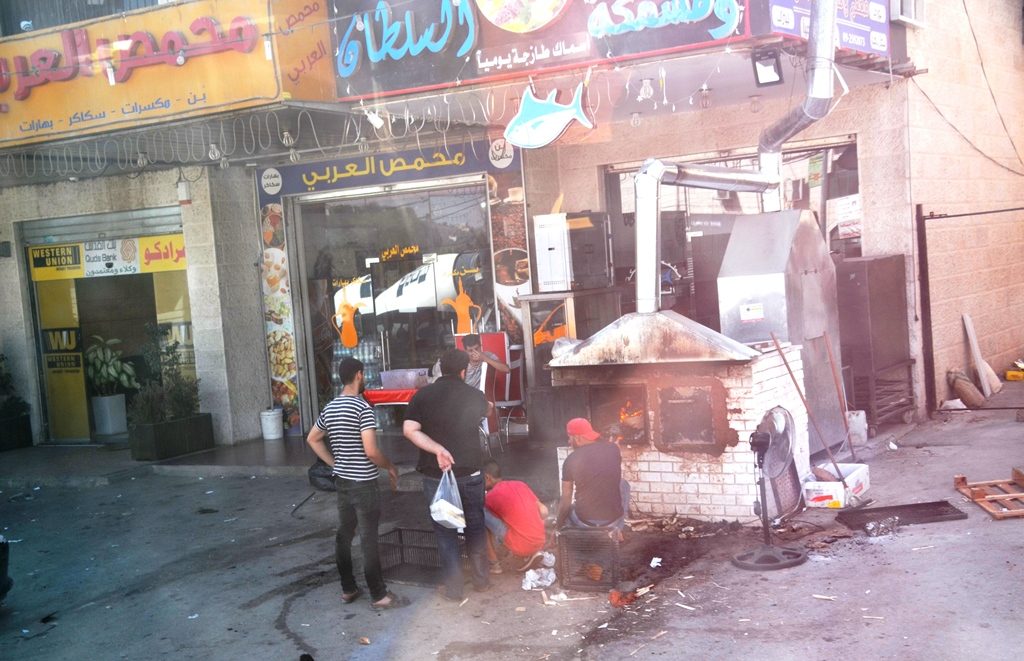Once in while it is good to leave Jerusalem, Israel, and see what is happening in other parts of the country.
An opportunity for a trip to the Shomron was hard to pass up. Three times previously, I joined various groups going over the green line to Judea and Samaria, to the Shomron. I was interested to see how things have changed. Often those who travel a regular route do not notice change as much as one who only goes by occasionally.

Leaving Jerusalem, one sees how much construction is happening, how built up some areas are today. Above are a few of new Arab houses along the road.

Neighborhoods stretch out with new dwellings. In the distance, however, is one undeveloped area.

There it is up on the hill, still the same as it was decades ago. The shell of the King of Jordan’s planned summer palace. No one seems to want to touch those dunams of land.

But new Jewish neighborhoods are also under construction, Leshem is a planned and growing community.

One thing has not changed, along the road one still see piles of junked cars in Arab neighborhoods.
By the Oslo Accords, Judea and Samaria was divided into three areas: Area A, B and C.
To make something extremely complicated simplified:
Area A is under PA control. B is under PA governance with Israeli security. C is under Israeli control.

First stop was Pedu’el. From המרפסת של המדינה, HaMirpeset Shel HaMedina, loosely translated as Israel’s Lookout, on a clear day one can see, well almost forever, to the sea. It is one of those spots where one realizes just how small Israel really is.

Ever wonder where those old stained clothes and seconds of wipes end up?
Second stop was at Ofertex manufacturing plant in Barkan Industrial Park.

I wrote about a visit to Barkan Industrial Park two years ago. While SodaStream got the media attention, dozens of companies are based in the region. This one recycles fabrics to make cleaning cloths, repackaged under private labels for Walmart, Dollar Stores and European clients too. Oftertex was started by Polish survivors who came to Israel in 1950. Fourth generation owners of this private company employ 120 people. Of the 100 Arab workers, some are third generation employees. Israeli companies pay over three times average PA salaries, plus have better working conditions and benefits.

Thousands of Arab workers are hurt if BDS boycott’s are effective, if production slows or a business is forced to close or relocate.

Back on the road, we passed a memorial to one of too many Israelis who were murdered by terrorists at this bus stop.

Third Stop was in Itamar, which I had passed on previous trips, but never entered. I had not realized how large and spread out it was.

A few of Itamar homes in the distance, as seen from Zimerman Farm where we heard the story of Zimerman Family’s pioneering in organic farming.

Looking out, one sees how getting into Itamar is not so easy, and requires planning. I could not help thinking of the Fogel family as I stood and stared out.

We passed Israeli soldiers standing guard on the road in a cement shelter for protection.

And those red warning signs, telling Israelis not to enter PA territory, were posted at the Arab villages of Area A.

The view on the way to Stop Four on Har Bracha, Blessed Mountain, is worth sharing, even if it was hazy that day.

Wine tasting with lunch at Har Bracha, demonstrated the quality wines coming from vineyards planted in the once barren land, now producing 50,000 bottles a year.

My first visit to Shehem, Nablus, inspired an Israellycool post. Finding Yosef’s Tomb from the safety of the lookout on Mount Gerizim was harder this time.

Stop Five showed “the refugee camp” which is still the same cramped, pathetic photo op, as the areas around have grown and sprawled outward in all directions.

A Tahini Factory near the overlook was Stop Six. The owner Yosef HaCohen shared his story of being a Samaritan businessman. Not Jewish. not Muslim. His children are in the school system under PA, and Har Bracha Tahini is trying to do business in Europe, not so easy for a company located in the “West Bank.”

A trip through the Shomron on Ramadan, when Muslims fast all day, and eat after dark, means food places are shut in the morning, but fires get going in late afternoon.

On our last stop before returning to Jerusalem, Michal Eshed shared her Eretz IL research. She has found sources for hundreds of locations with Arab names that were built on top of Jewish sites, where the Hebrew source names were used and translated to Arabic.

Near the Shomron Community Council building where Eshel shared her power point presentation, is this memorial plaza.

Our bus was stopped by police not far from Ramallah on our return to Jerusalem. Traffic was backed up the other way. We had heard a soldier had been critically wounded. The police were checking cars, looking for someone. Sadly the young soldier died from his head wound.
The Shomron’s “checkerboard of governance” is complicated. Seven stops on a day trip are like a drop in the bucket. One blog post only provides a small piece of the picture..

I thought to close with a bit of the view overlooking Itamar in the Shomron.
More photos from day can be seen HERE
Interested ro see for yourself? Let me know and I will introduce you to those who want to share the beauty of Eretz Yisrael.
